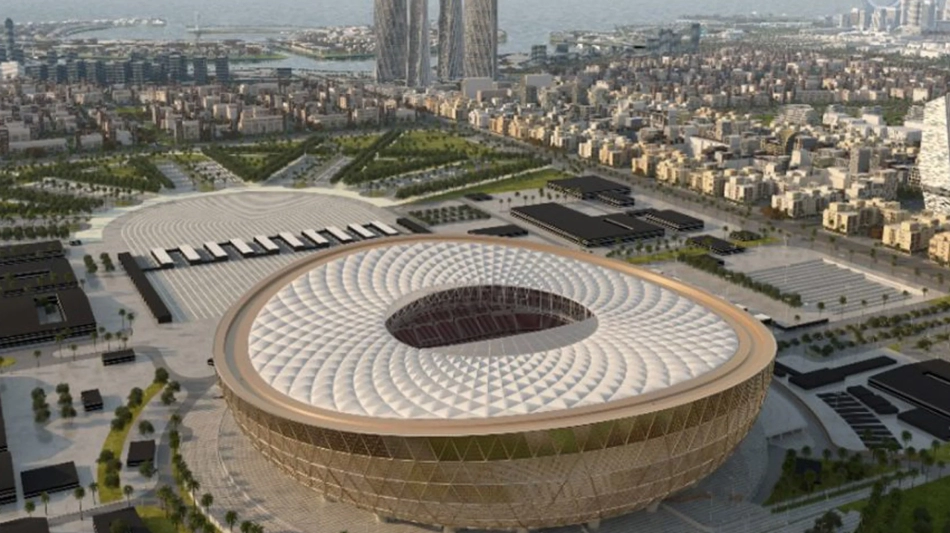Doha: With a month left until the start of the FIFA World Cup Qatar 2022, the eight World Cup stadiums are ready as football fans await a different version of the World Cup which will be held for the first time in the Arab world and the Middle East from Nov. 20 to Dec. 18, 2022.
Qatar is preparing to welcome football fans from all over the world, giving them the opportunity to learn about Qatar, the region and the authentic Arab culture, as well as discover the amazing and unique 2022 World Cup stadiums. The World Cup will be held in eight stadiums, seven of which were built specifically to host the tournament, while the Khalifa International Stadium underwent comprehensive development work.
Since winning the bid to host the World Cup, Qatar has started building seven stadiums with innovative designs that blended tradition, Qatari culture and architecture, which resulted in exceptional and unique stadiums.
The World Cup will represent a turning point in the history of Qatar and the region, as it will leave a legacy that will set new standards in organizing major sporting events in the future. The World Cup in Qatar is a unique tournament in the history of the World Cup, as it is the first version of the tournament that will be held in eight stadiums close to each other in a way that enables the public and the media to follow more than one match from inside the stadium in one day. The FIFA World Cup Qatar 2022 will not be the first tournament to be held in the Arab region only, but it will be the most compact tournament that allows fans to attend more than one match per day.
All stadiums are equipped with solar-powered cooling technology to keep the temperature moderate. All stadiums will be environmentally friendly, and temperature controlled. Qatar built stadiums with standard elements that will be reconfigured after the tournament to become a permanent legacy for the 2022 World Cup far beyond Qatar's borders, as about 170,000 seats will be released after the end of the World Cup to be granted to developing countries as assistance from Qatar to improve the sports infrastructure of those countries since 22 new stadiums will be constructed in developing countries. This reconfiguration will leave Qatar's stadiums with a capacity of 20,000 to 25,000 seats, which is suitable for its local sporting needs.
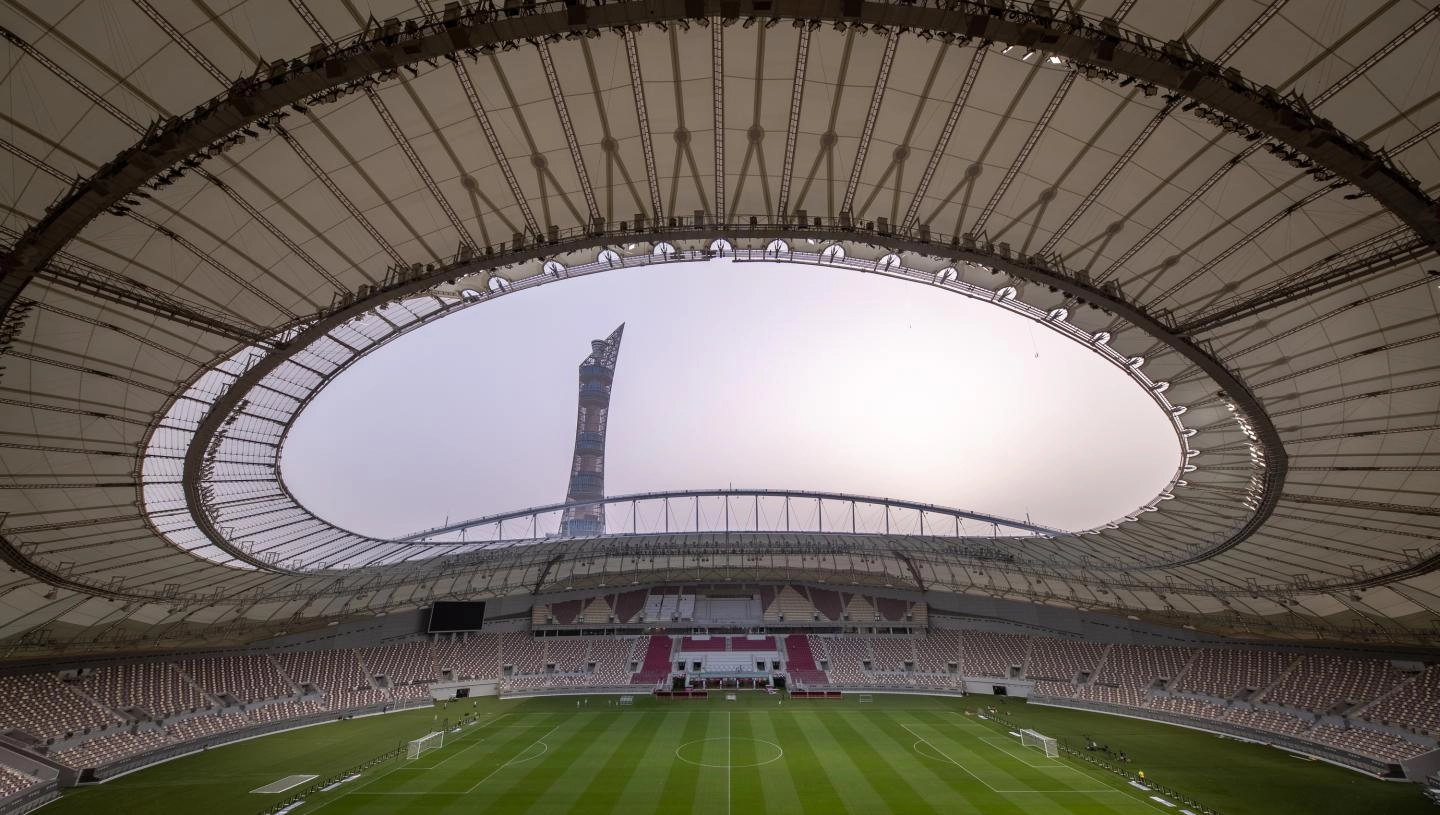
Khalifa International Stadium, which offers fans 40,000 seats, is the first stadium of the 2022 World Cup in Qatar. This sports edifice is the national stadium of the State of Qatar. Since its first opening in 1976, it has enjoyed a rich history, hosting many sporting events and tournaments in the Gulf state. The stadium has served as the cornerstone of the country's sporting tradition. It hosted many notable events during its long history, such as the Asian Games, the Arabian Gulf Cup, the AFC Asian Cup, and other events. football or athletics in Qatar are rarely mentioned without reference to this stadium.
In preparation for the 2022 World Cup, Khalifa International Stadium has been completely refurbished, becoming the first of the eight stadiums to be ready to host the tournament. The development of the stadium included changing its external facade, adding about 12,000 seats to increase its capacity, in addition to providing it with energy-saving lighting systems. The digital lighting and the modern interface added a new lustre to the stadium. The stadium, which includes wide dual arches and relatively covered stands, is the centrepiece of the Aspire Zone and a sports complex that includes the Aspire Academy for Sports Excellence, Hamad Aquatic Complex, Aspetar Sports Medicine Hospital, and many other sports facilities.
The stadium is connected through a short pedestrian corridor to the 3-2-1 Qatar Olympic and Sports Museum, which shows this place's attachment to its past. The stadium's dual arches are among its most important and famous features. A wide canopy has been added under them, to work in integration with the cooling system to maintain a comfortable temperature for players and fans.
The stadium's readiness was announced in May 2017, when it hosted the 45th Amir Cup finals. It is now ready to participate in the largest football event ever in the world, the Qatar 2022 World Cup, where it will host 8 matches, starting from the group stage, then the round of 16 and the 3rd place playoff.
One of the most prominent stadiums built specifically for the World Cup is Al Bayt Stadium in Al Khor City, which will host the opening match of the tournament between Qatar and Ecuador on Nov. 20, 2022. Al Bayt Stadium is fashioned to replicate the Bayt Al Shaar, the tents historically used by the nomadic people of Qatar throughout history.
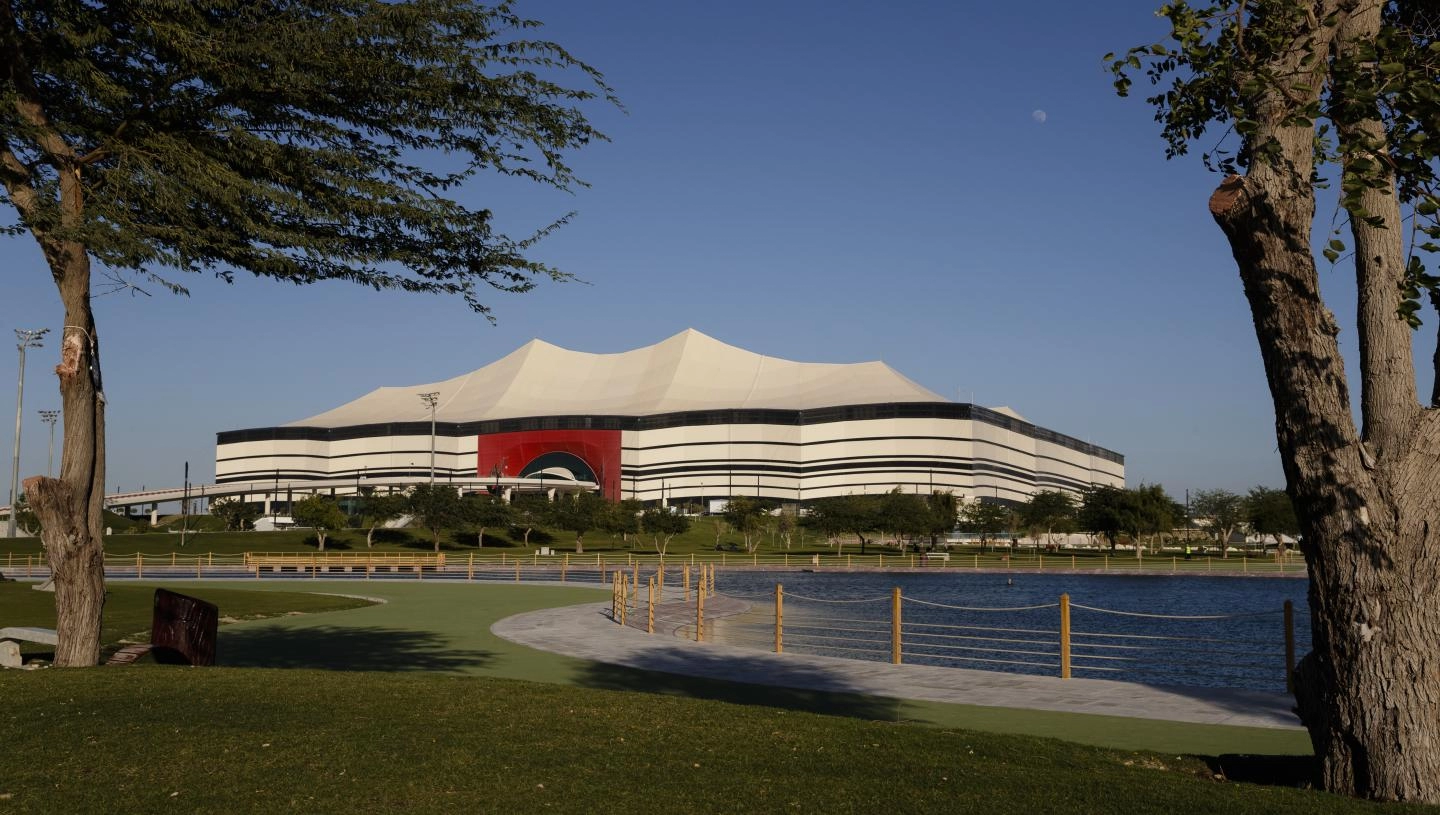
This innovative design, echoing the flowing fabric of the traditional Bedouin dwellings, promises to delight all fans not only due to the design but also as the stage for nine key matches at the FIFA World Cup Qatar 2022 including the opening match, five additional group matches, as well as knockout stage matches including one of the semi-finals. The stadium, which can seat up to 60,000 spectators, is unique with its giant tent structure covering the whole stadium.
Al Bayt Stadium is one of the most well-known stadiums in the world, not only at the level of development and technology but also at the level of design, as the stadium will continue to remind the world of Qatar and Arabs' tent known in the Gulf and Arab countries as Bayt Al Shaar. Qatar relied on its rich culture to welcome the world, inviting visitors to enjoy the comfort that this part of the world used to offer its guests centuries ago. The outer structure that embodies the shape of the tent embraces one of the ultra-modern football stadiums. Bayt Al Shaar of Bedouin tribes and families can be recognized by their black and white stripes. This is reflected in the stadium's distinctive façade, as fans are greeted, upon entering, by the vibrant Al Sadu carvings.
The canopy that serves as the stadium roof and is inspired by the true shape of the tent structure, will cast its shadow on the pitch, which will contribute to enhancing the work of air cooling technologies throughout the stadium. The shade created by the tent's structure and retractable roof will complement the stadium's cooling technologies, helping to maintain a comfortable temperature indoors without the need for additional energy sources.
Sustainability was also given great importance during the construction of Al Bayt Stadium, as the seats in the upper part of the stands were designed to be dismantled after the end of the World Cup Qatar 2022, reducing the number of seats to about 32,000, while the rest will be donated to other countries. Sustainability dominates the area around Al Bayt Stadium, where parks and green spaces are an important part of the design plan for the areas surrounding the stadium to give families in the city of Al Khor an unparalleled space to spend enjoyable times in fresh air. The sustainability approach extends from the stadium to the surrounding city of Al Khor, which possess many parks and lakes, in addition to a green reserve that forms a belt extending from the stadium to the sea, which contributes to establishing the legacy of the most welcoming stadium in the world.
As the stadium is closely linked to the Qatari culture, it will host guests from all over the world with open arms, providing them with the opportunity to live an experience rich in authentic Qatari traditions. This stadium will become a model in the world of stadium construction in the future.
After the World Cup, the stadium will be reused to serve the community around it with a 5-star hotel, shopping mall, gymnasium and multi-purpose hall. Aspetar, a leading sports medicine hospital in Qatar, will open near the stadium. Fans can easily reach it within half an hour, whether by private cars or public transportation provided by the state, from Doha to Al Bayt Stadium directly via the coastal Al Khor Road, which was newly built according to international standards. Al Khor Road can also be reached from all cities of Qatar via Al Majd and Al Shamal Roads.
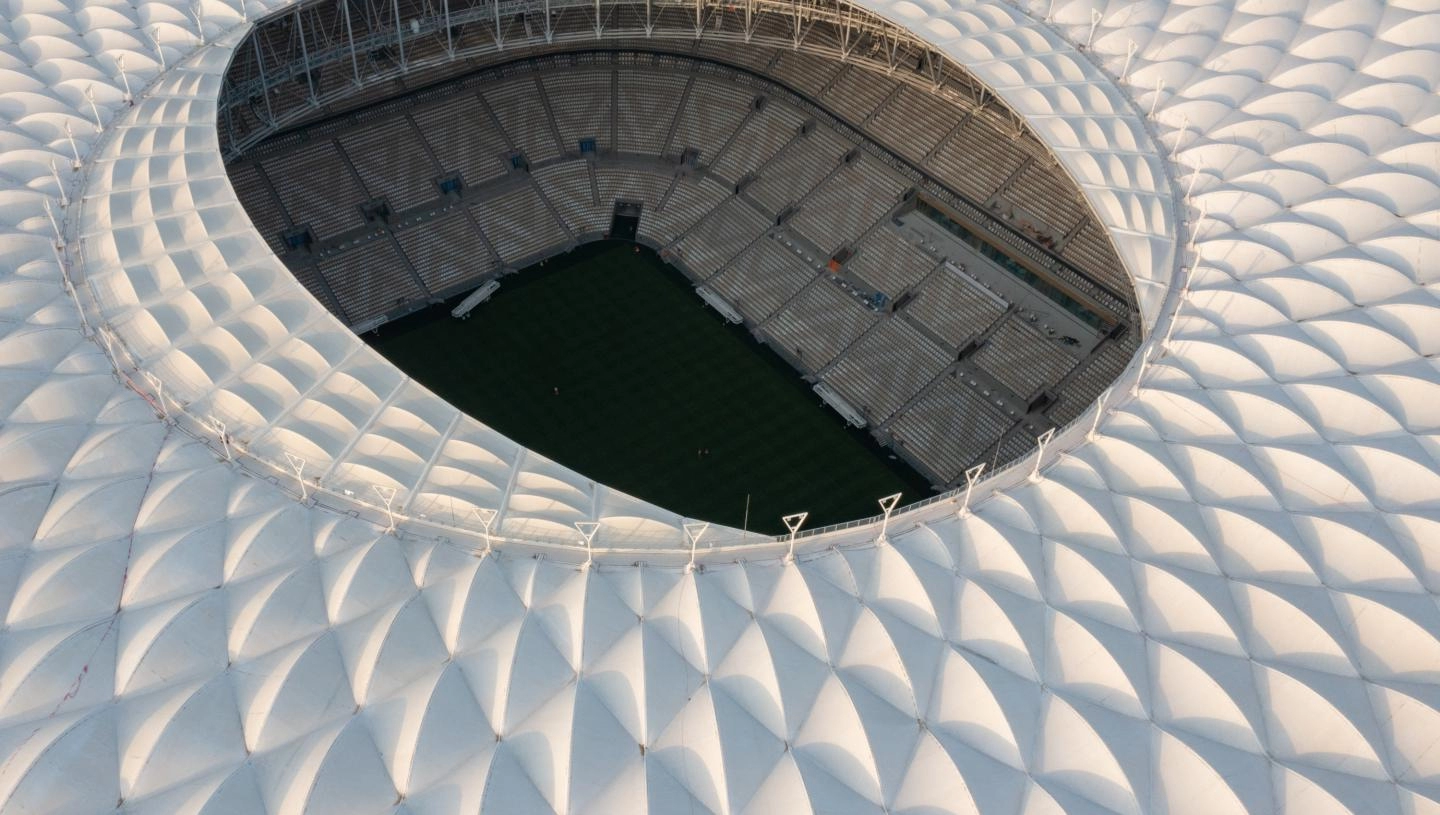
Lusail Station is the closest station to Al Bayt Stadium from the Doha Metro, and it is located directly on Al Khor Coastal Road, about 20 km from the stadium. This enables the public to move by metro and then take public transport buses that pass directly next to the station and take about 20 minutes.
Al-Bayt Stadium was officially inaugurated with a huge artistic and football festival on Nov. 30, 2021, when it hosted the FIFA Arab Cup group stage match between hosts Qatar and Bahrain. The tournament- which was a rehearsal for the World Cup - achieved great success in all respects. Algeria won the title.
The third most prominent stadium for the World Cup Qatar 2022 is Lusail Stadium, the largest stadium in the World Cup in terms of capacity, with a capacity of 80,000 seats. Its located in Lusail City, which includes a marina, commercial areas, an entertainment center, homes, commercial centers, golf courses, schools, medical centers and mosques. It is a sustainable city that accommodates about 200,000 residents and features a stadium that raises the standards of sports fields to unprecedented levels. The stadium is located about 15 km north of Doha and is connected to the capital by metro lines. Fans will be able to reach the matches via upgraded roads, the Doha Metro, or the Lusail City light transport service.
This magnificent sports edifice is considered the jewel of the World Cup stadiums, as it will be the focus of the world's attention when hosting the final match on Dec. 18, which coincides with the celebration of Qatar National Day. This distinguished sports landmark will play an important role during the tournament and will leave a legacy for the residents of Lusail City and the State of Qatar in general. It will also host 10 matches in the World Cup, starting with the group stage, then the round of 16, the quarterfinals and the semifinal match.
The stadium is a futuristic icon distinguished by its size and splendor of unique engineering touches and was built to harmoniously blend with its surroundings. Lusail Stadium was designed around the dance of light and shadows as seen in the traditional fanar lanterns. It has been designed as a rich representation of the Arab world, showcasing motifs of vessels, bowls and art pieces from the region.
The construction of the stadium adopted the sustainable building practices, and the water is reused to irrigate the plants in the area surrounding the unique sports edifice, in addition to utilizing highly efficient water leak detection systems, the stadium construction works succeeded in providing 40% of clean water compared to traditional stadium construction projects.
The stadium roof was built with the element of sustainability in mind, as it was constructed using an advanced material known as "PTFE", which protects the stadium from wind and dust, while allowing enough sunlight to enter the field, which is necessary for the growth of grass on the pitch, in addition to providing shade to relieve stress on the cooling technology used in the stadium.
After the tournament, Lusail Stadium will be transformed into a community center with schools, shops, cafes, sports facilities, and health clinics as part of Qatar's commitment to sustainable development. Most of its 80,000 seats will be dismantled and donated to sporting projects, transferring the exceptional legacy of this outstanding stadium, as well as part of the history of the FIFA World Cup, to other locations around the world.
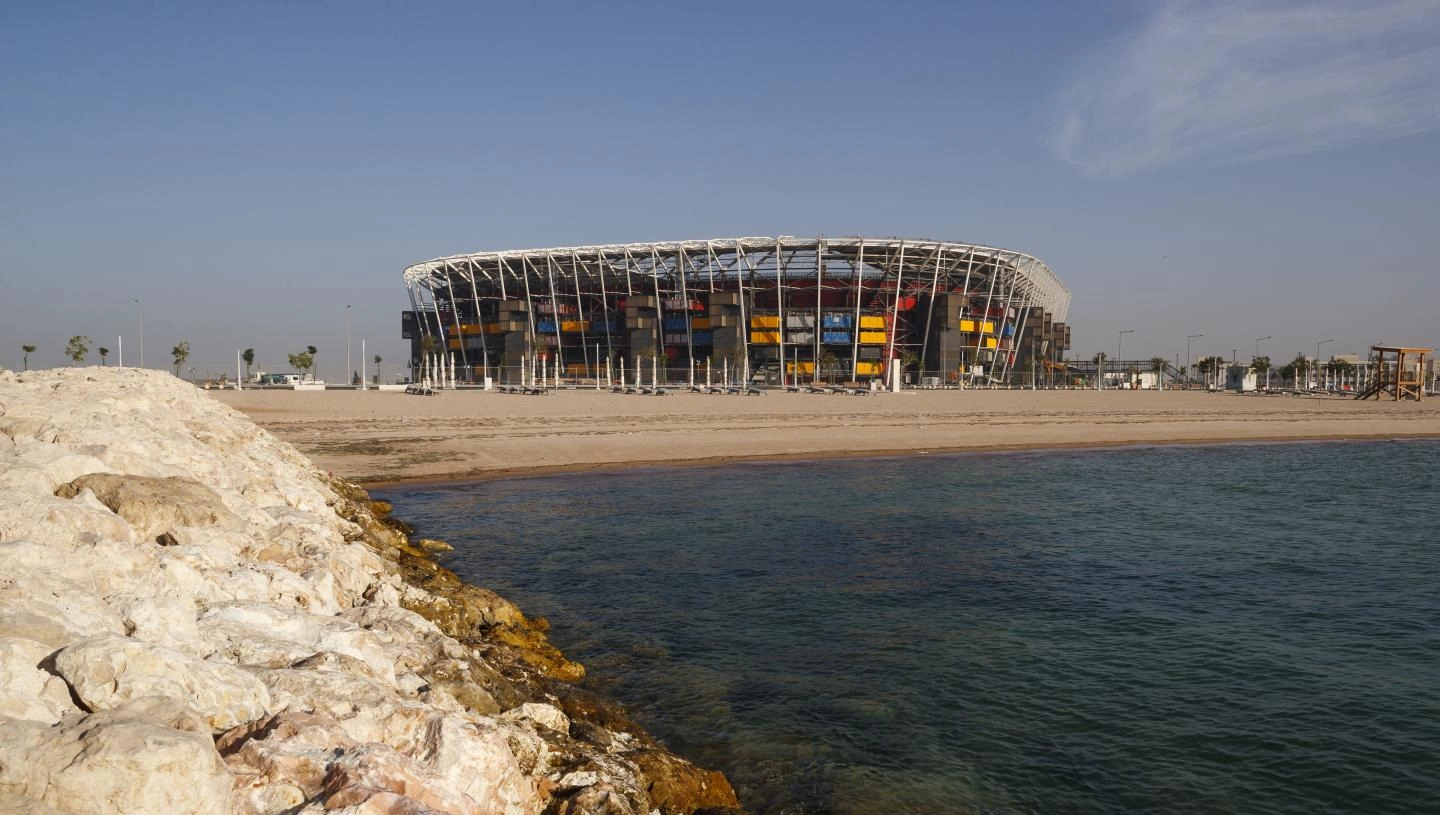
The fourth most prominent stadium for the World Cup Qatar 2022 is Stadium 974. It is the first completely dismantlable stadium in the history of the World Cup, as it was built from 974 shipping containers, and this number is the international dialing code for the State of Qatar. The Stadium 974 project is considered a pioneering project in the world of sports stadium construction. Its idea aims to draw the world's attention to the commitment of the Government of Qatar to always put sustainability in mind when thinking about major projects. Once the stadium is dismantled, the site will eventually become a stylish waterfront entertainment district with restaurants, shopping options and more.
Stadium 974 sets new standards in building and reusing sustainable facilities, as the first stadium that can be completely dismantled and reused for other purposes after the tournament. This is reflected in the preparation of a flexible design that allows the stadium to be reconstructed with the same capacity in another location, or to build other smaller facilities using the same materials.
The stadium, which can accommodate more than 40,000 fans, is a milestone in the design and construction of stadiums, as it was built using certified shipping containers and building units made of recycled steel, which reduces the amount of waste generated from the manufacture of components used in construction, in addition to reducing waste on the job site. The use of prefabricated construction components reduced the time required to complete the stadium, and the use of highly efficient systems resulted in a 40% saving of pure water during the construction of the stadium, compared to traditional stadium construction projects.
Stadium 974 is located on the coast of the Arabian Gulf, near Hamad International Airport, and features a charming view of the West Bay area of Doha across the Gulf waters, and the nearby Doha Port. The stadium hosted its first official match on Nov. 30 during the 2021 Arab Cup, and will host 7 matches in the World Cup, starting with the match between Mexico and Poland on Nov. 22, for Group C.
Stadium 974 received two certificates from the Global Sustainability Assessment System (GSAS) of a five-star category in design and construction, and of the category of excellence in construction management, granted by the Gulf Organization for Research and Development (GORD), in recognition of its commitment to sustainability standards during the design and construction stages.
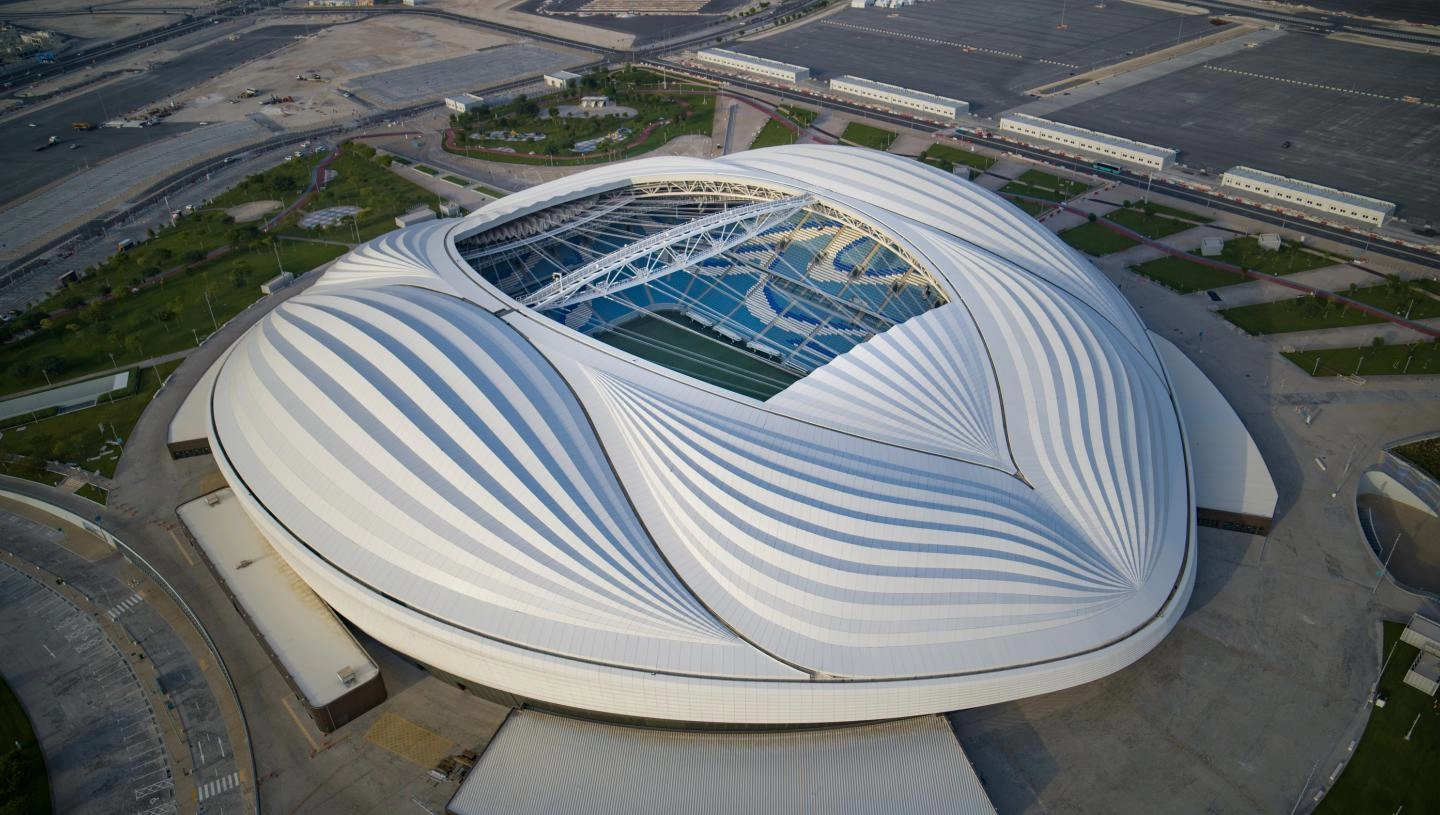
The fifth stadium for the World Cup Qatar 2022 is Al Janoub Stadium, which located in the southern city of Al Wakrah. It has a capacity of 40,000. It was designed as a nod to the dhow, the pearl fishing boats which are one of the most iconic symbols of the Qatari region. As one of Qatar's oldest continuously inhabited areas, Al Wakrah has long been known as a center for pearl diving and fishing.
Al Janoub Stadium is equipped with advanced cooling technology, and the stadium features a retractable roof, which allows to reduce the intensity of sunlight and shade the entire stadium, which contributes to raising the efficiency of the cooling system.
The stadium is also part of a wider sports complex, with cycling and horse trails, shops, restaurants and sports clubs.
Al Janoub Stadium was inaugurated on May 16, 2019, coinciding with the 47th Amir Cup Final. It will host the World Cup matches from the group stage and the round of 16.
After the World Cup, the stadium's capacity will be reduced to 20,000 seats, and the seats will be donated to other sporting projects around the world, and the stadium will be ready to embrace the excitement and enthusiasm of the Qatar Stars League matches. Al Wakra Sports Club fans will also have the opportunity to live in a very exciting atmosphere during the matches of their favorite club in the stadium. In addition to football, the stadium is surrounded by magnificent gardens featuring sporting and recreational facilities that the community will benefit from for years to come.
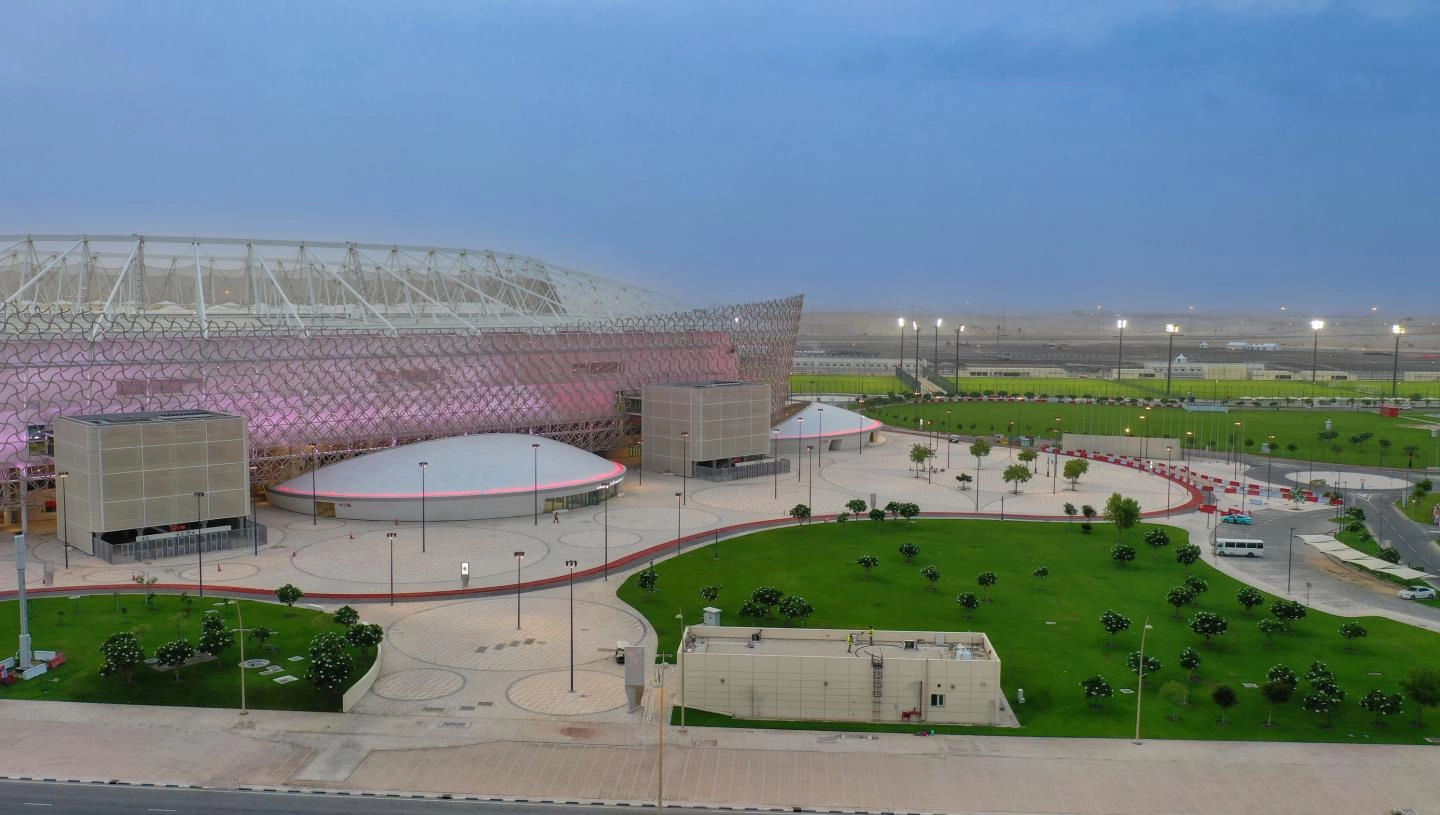
The sixth stadium for the World Cup Qatar 2022 is Ahmad Bin Ali Stadium which is located in the Umm Al Afaei area, one of the oldest Qatari cities and the home of Al Rayyan Sports Club. The city is located on the outskirts of the desert, and its people are known for their adherence to their amazing history as much as their love of football.
The importance of the design of the dune-like stadium is that it is an architectural masterpiece symbolizing Qatari culture, heritage, and traditions, and combines the past and the future. Its facade is the most striking feature, as it reflects different aspects of Qatar's personality and symbolizes the importance of family, the pure beauty of the desert and its rich wildlife, in addition to local and international trade.
Ahmad Bin Ali Stadium, with 40.000 capacity, was inaugurated on Dec.10.2020 coinciding with hosting the 48th edition of Amir Cup Final. It is scheduled to witness seven matches until the round of 16 during the Qatar World Cup 2022, and after the end of the tournament, Ahmed Bin Ali Stadium will become the headquarters of Al Rayyan Sports Club. More than 80 percent of the building materials from the original stadium that once occupied the site have been used, while the trees surrounding the old stadium have been carefully preserved.
When visiting the stadium, fans will also be able to navigate via the new, eco-friendly Doha Metro system for a truly sustainable experience. The capacity of the stadium after the tournament will be reduced to 20,000 seats, thanks to the nature of its detachable seats, as the seats of the upper stands will be dismantled to be reused in the development of sports projects and facilities in Qatar and the world.
The seventh stadium for the World Cup Qatar 2022 is Al Thumama stadium, which is located in the southern neighborhoods of Doha, a few minutes from Hamad International Airport, and will accommodate 40,000 fans
.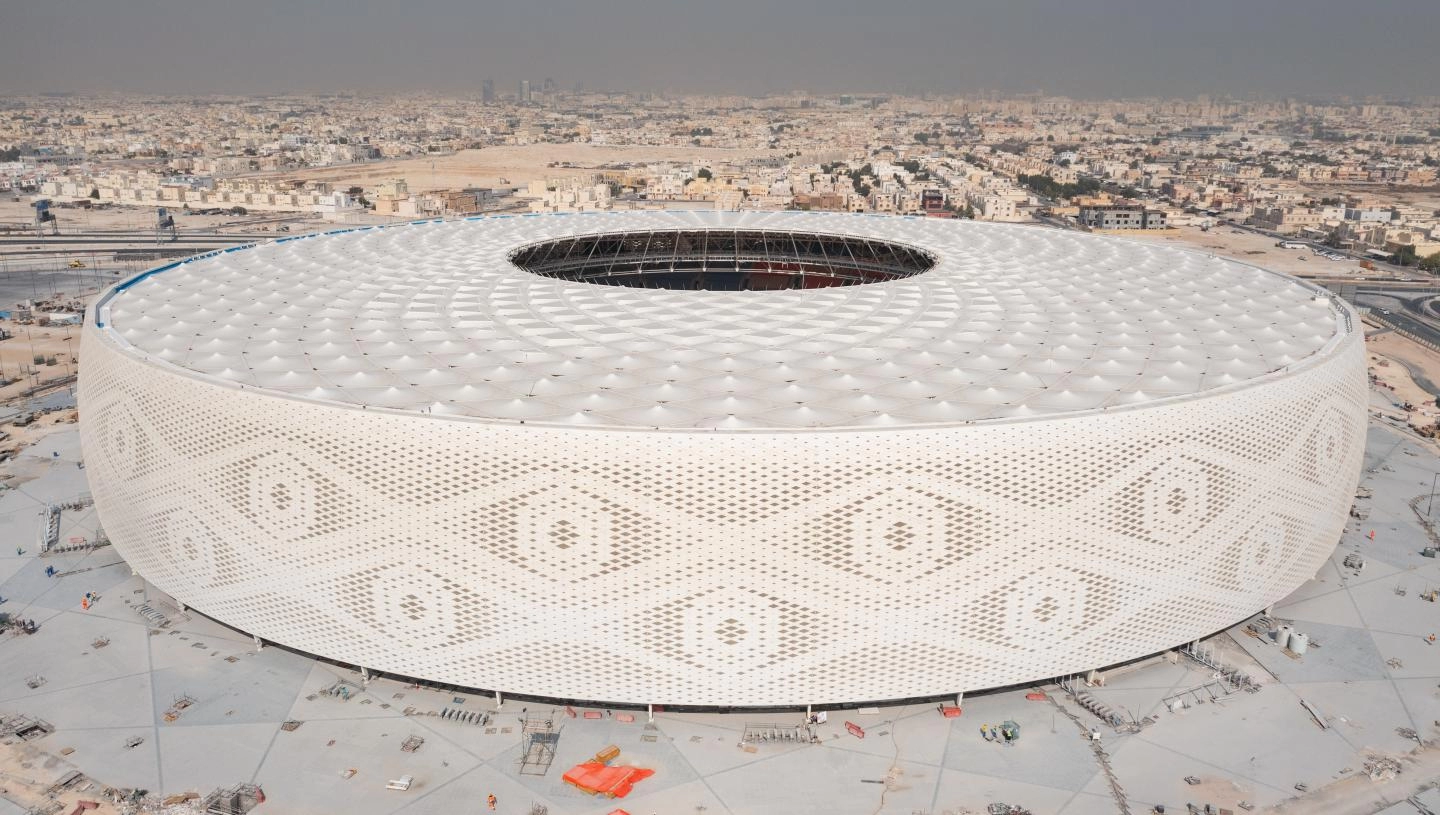
Al Thumama Stadium is a distinct Arab architectural icon, as it is inspired by the traditional qahfiya (the cap worn under the Ghutra and Egal) in the Arab world. This design was chosen because it is a cultural commonality among Arabs in the Arab world. Therefore, it expresses the Arab civilization's depth and the intertwined cultural-historical legacy of the Arab countries. It was designed by Qatari architect, Ibrahim Al Jaidah.
The stadium was inaugurated in October 2021 during the hosting of the Amir Cup final, and it will host 8 matches during the World Cup 2022 from the Group Stage and until the quarterfinals.
At the events closing, the stadium's capacity will be reduced to 20,000 seats with the additional seating being gifted to developing nations around the world. The stadium will use its new capacity to host football matches and other sporting events.
Al Thumama Stadium received two certificates in sustainability design and construction from the Global Sustainability Assessment System (GSAS) program, in appreciation of the World Cup stadium's commitment to sustainability standards, during the design and construction stages. After completing the audit work, the Gulf Corporation for Research and Development (GORD) granted Al Thumama Stadium a five-star GSAS certificate in design and construction, and a Category A building management certificate.
Finally, comes the eighth stadium of the World Cup in Qatar, the Education City Stadium, where football meets science and knowledge.
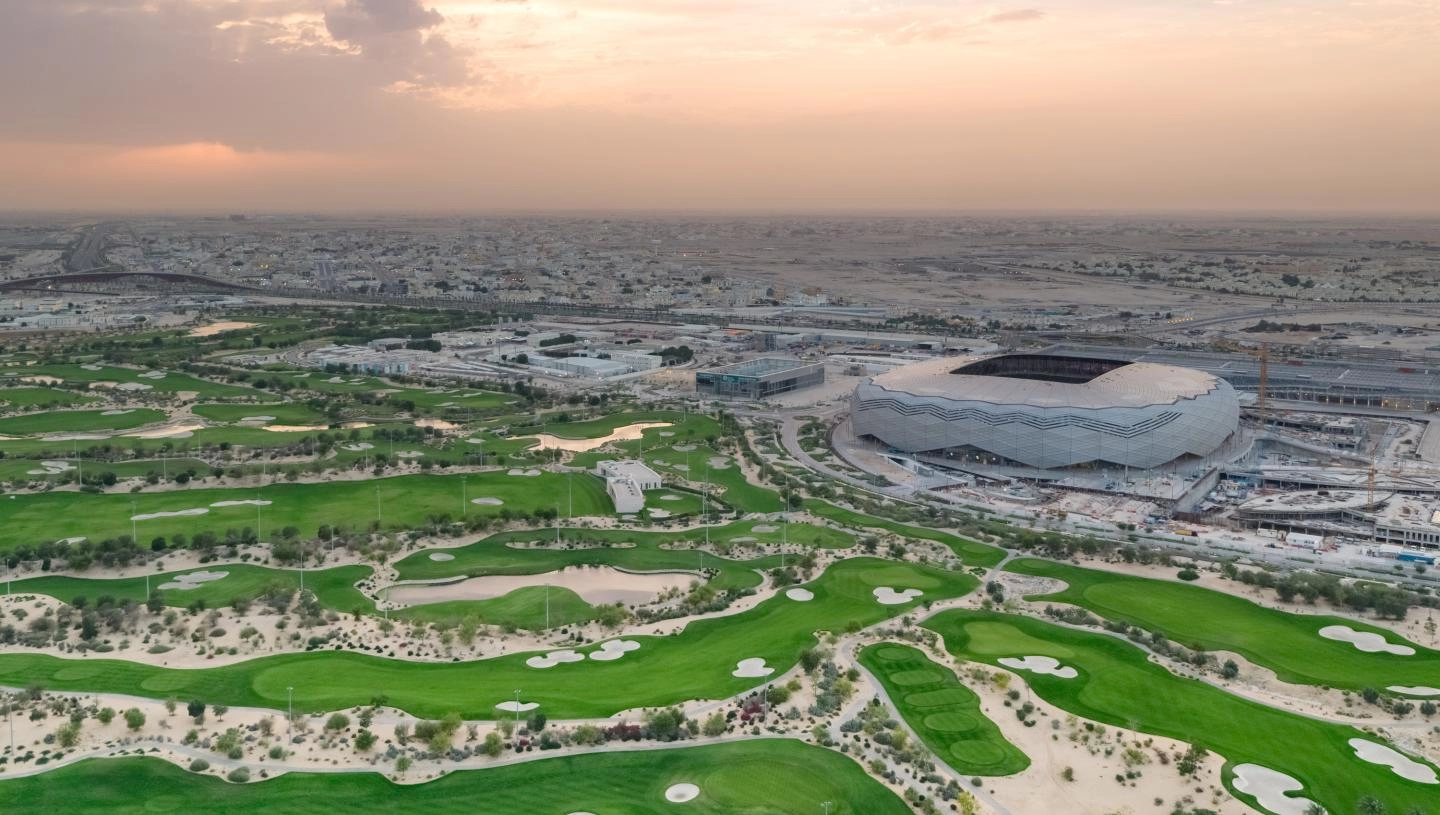
The Stadium is located in the midst of several world-class university campuses at Qatars global center of excellence, Education City. The stadium can seat up to 40,000 spectators, and it takes the form of a jagged diamond that sparkle as the sun moves across the sky. It is an exceptional stadium that highlights Qatars distinguished position as a dynamic educational center for students and academics throughout the Arab world and the world. It is simply a leading center for knowledge and innovation, as this area is home to a number of world-leading universities that are full of inventions and innovations.
The stadium's modern design is in harmony with traditional Islamic architecture. The triangles on the outer facade imitate intricate geometric patterns resembling diamonds.
The Stadium was announced ready for the World Cup on June 15, 2020, through a virtual event, in consideration of the challenges posed by the global pandemic, COVID-19.
The stadium will host eight matches during the World Cup Qatar 2022, from the group stage to the quarterfinals. Following the World Cup, the sports edifice will turn into a sports and entertainment destination that meets the needs and aspirations of all Education City affiliates.
More facilities will also be added to the stadium perimeter after the end of the tournament, to enable the people of the area and the academic community to keep pace with future developments and motivate them outside the classroom.
Following the FIFA World Cup, the stadium's capacity will be halved, and 20,000 seats will be donated to build stadiums in developing countries, to help spread the passion for the game around the world.
It is noteworthy that all eight stadiums for the 2022 FIFA World Cup Qatar have obtained the Global Sustainability Assessment System (GSAS) certificate, including 3 stadiums that have received the four-star category, while the other stadiums have been awarded the five-star category. The GSAS system has been approved by the Federation Internationale de football Association (FIFA) and ensures that the tournament's infrastructure meets a set of strict environmental standards.

